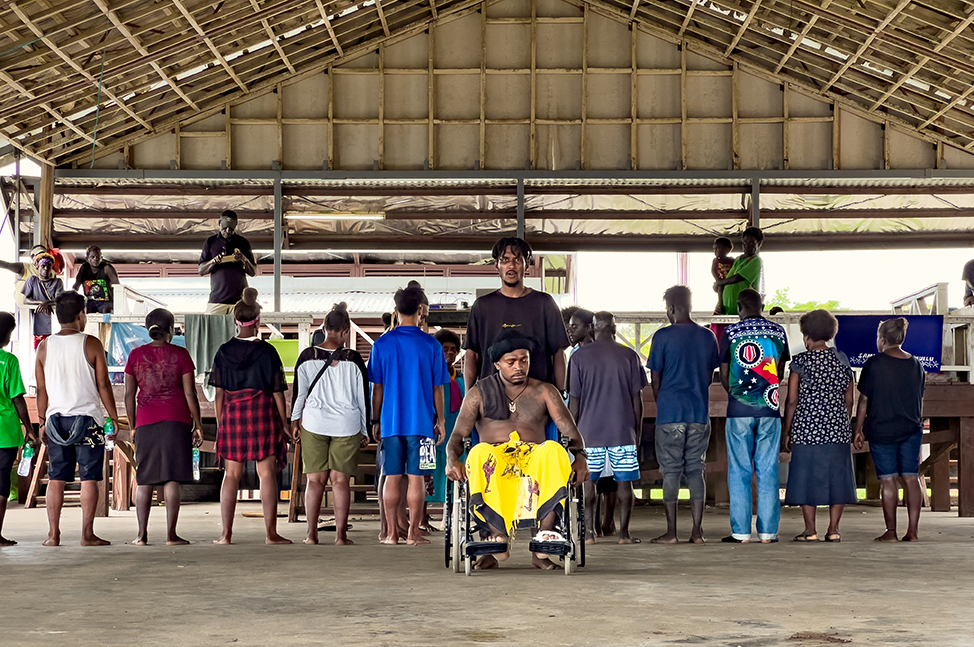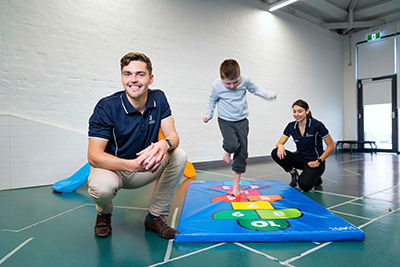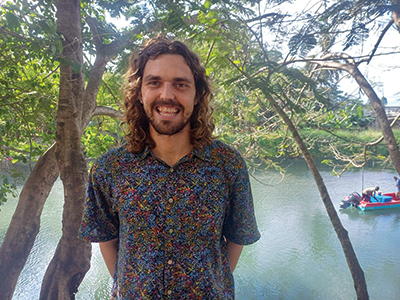02 September 2024
A desire to work directly with patients in low-resourced communities has taken UniSA alum Tom Fitzpatrick all over the Pacific to collaborate with locals in facilitating life-changing care.

Tom Fitzpatrick
Program Manager, Luk Afterem Legi
Bachelor of Podiatry
Impact, biology, hands-on patient care and diversity of application with direct decision-making, were the key elements on Tom’s career wish list when he discovered podiatry.
After an initial conversation with Associate Professor Sara Jones, (then) program director of the Bachelor of Podiatry, Tom was captivated by the variety of applications of the discipline, from sports to paediatrics, and, diabetic foot care – which is now the area of care Tom specialises in through his work with communities in the Solomon Islands.
The World Health Organization estimates about 422 million people globally are diabetic, many of whom live in low to middle income countries. In the South Pacific region, which includes the Solomon Islands, diabetes affects almost one in four people aged over 25. The tropical climate, widespread poverty, including a lack of healthy food and water, and limited health care, drive some of the highest amputation rates, related to diabetic foot disease, in the world.
A study tour to Kiribati, a small island country with a population of around 120,000 in the central Pacific Ocean, was a pivotal experience for Tom.
“I’d previously participated in clinical visits to regional and low-resourced communities within Australia, such as to Whyalla and the APY lands, but this trip was my first time to a Pacific Island country, and it opened up my eyes,” Tom says of his Kiribati experience.

Driven by these experiences, his desire to contribute within diverse communities, and see the world, Tom accepted a project coordinator role within an NGO which took him to Tonga, Fiji and Papua New Guinea.
“It was a valuable opportunity to develop strategic thinking and creative problem-solving skills,” Tom reflects, “It’s very rewarding to learn how people in different parts of the world celebrate achievements, overcome challenges, and adapt to different ways of living.”
The opportunity then arose through Australian Volunteers International to work at the National Referral Hospital, Honiara in the Solomon Islands, where more than 60% of in-patients on the surgical ward have severe amputations and wounds. Globally the mortality rate in the five years following an amputation for patients is almost 70% and even higher in the Solomon Islands.
Under the mentorship of Dr Rooney Jagilly, Head of Surgery, Tom has taken on the role of Program Manager for the Luk Afterem Legi (Looking After Legs) program.
“What began as a three-month placement has turned into 18 months and counting,” Tom says of his time working on the program.
“There are no podiatrists or specialists in diabetic foot care in the Solomon Islands. As a project manager with a background in podiatry, my role focusses on working with surgeons, nurses and other health professionals to improve screening, prevention and management of diabetic foot disease with the overall goal to contribute towards reducing the rate of avoidable amputations and deaths.”

Tom explains that it is collaboration that makes the difference in care outcomes: “I’ve been overwhelmingly impressed by my colleagues’ resilience, creativity and eagerness to overcome significant challenges at different levels of the healthcare system and achieve positive health outcomes.”
“It’s great to grow and learn alongside local health workers who are the ones driving change and making all the impact,” Tom says.
He also notes the important role that early intervention plays in health care, and the work that can be done, often through innovative and creative ways, to improve community health outcomes.
Through partnering with Dreamcast, a Solomon Islands based theatre company, diabetic foot care awareness is being improved through use of film, art and theatre. The collaboration has resulted in accessible community performances in spaces such as community centres and beaches, to provide vital education and understanding, especially in regional areas.
Although podiatry has led Tom to the Pacific, he acknowledges that it’s just one of many paths he could have taken.
“Whether it’s working in high risk and amputations, or you’re keen to work with kids and contribute to the early phase of development, or sports and biomechanics, you’re quite likely to find a job that fits your interest.”
With his feet firmly grounded in this diverse discipline, Tom proudly says: “Podiatry opened up more pathways and experiences than I ever expected!”




